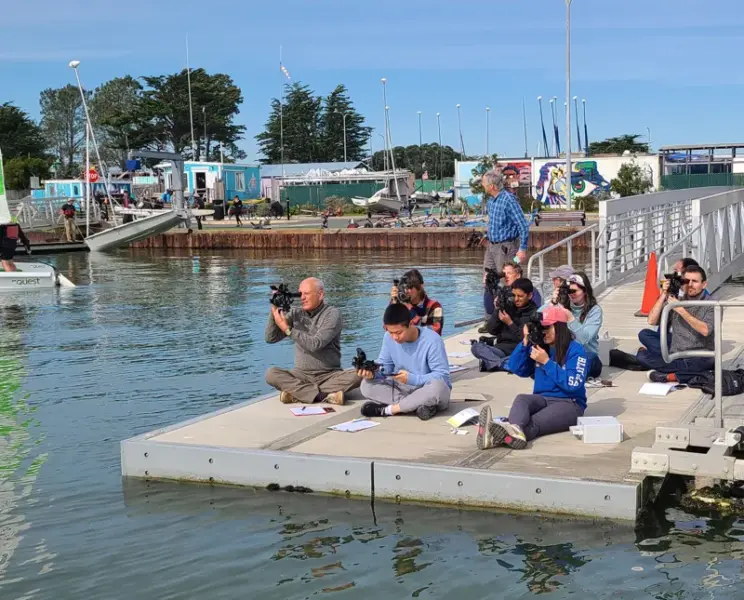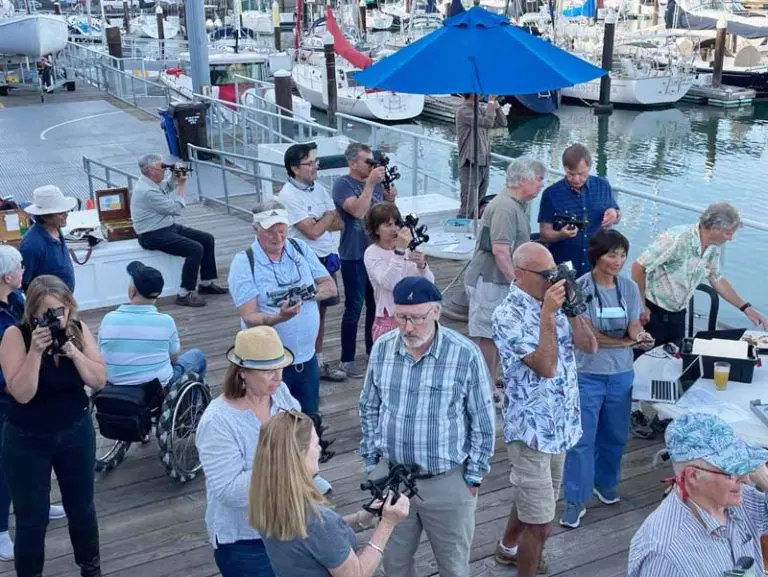
Getting in the Swing of Celestial Navigation
Our swing by the Cal Sailing Club just missed an opportunity to see a group of football widows/widowers getting in the swing of celestial navigation on the CSC docks.

Super Bowl Sunday was a perfect day for taking sun sights. Instructor Paul Kamen said, “We use the low-freeboard kayak dock, so the horizon to the south is close enough for a good noon sight. Everyone gets a professional-grade metal sextant to practice with.”
These are the same tools and techniques Joshua Slocum would have used in the first-ever solo circumnavigation of the world in 1895. Until the advent of electronic aids to navigation — RDF, Loran, and GPS — it was dead-reckoning combined with celestial navigation that helped mariners navigate the world.
How did these celestial classes come about? Paul filled us in. “Years ago, there was a lunar eclipse on my birthday, so I threw an Eclipse Party and included some celestial navigation practice that afternoon. I really enjoyed it, so from that year on, I’ve hosted a one-day, all-day celestial navigation class on September 27. We compress what’s usually a six-week course into one long day — and not everyone is still standing by the time we finish reducing our longitude sight in the late afternoon.”

“Since then, I’ve added the ‘Football Widows’ Celestial Workshop’ to the schedule, always on Super Bowl Sunday. Also the Turtle Bay Noon Sight Clinic, in the years when I have a Baja Ha-Ha berth. And one year I hosted a lunar meridian transit (like a noon sight, but using the moon) as part of the Thursday evening lecture series at Corinthian YC. Whenever there’s a lunar eclipse during prime time, I still gather a small group to practice the ancient Chinese method of determining longitude by measuring the time difference between the eclipse and a known star or planet transit.
“Class size on 9/27 and Super Bowl Sunday is limited to 15, so everyone can practice with a professional-grade metal sextant, although some of them date from the Second Punic War. (Yes, I own 15 metal sextants, plus a bunch of plastic models. Hey, I know musicians who have at least that many guitars ….)”
By swinging their sextants to land the sun on the “horizon,” these students ensured their noon sight from the Berkeley docks was as accurate as possible.
